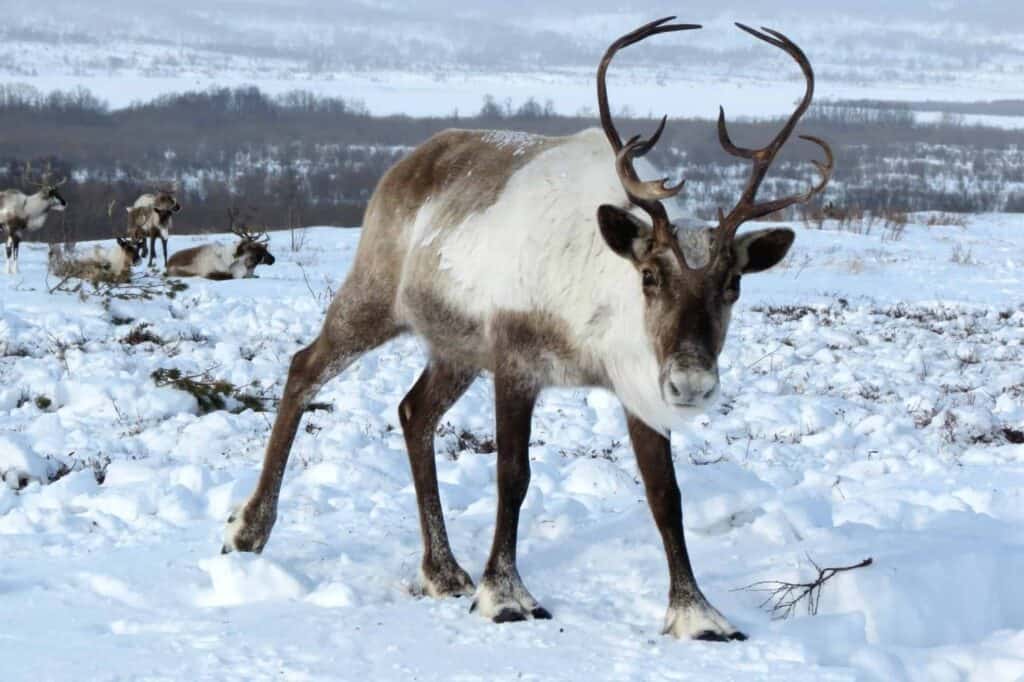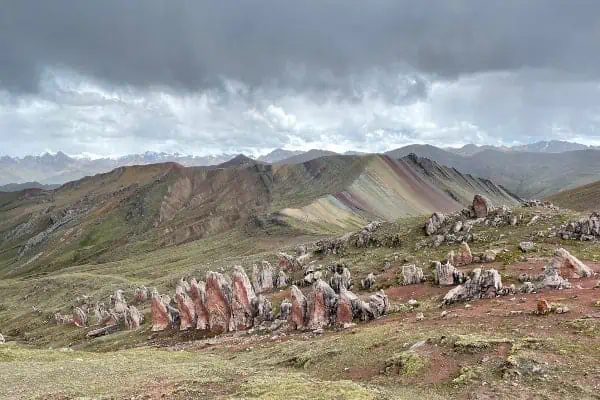Exploring Canada’s own herd of reindeer

Canada is home to many species such as the beaver, the common loon, the Canada lynx, moose, wolverines—and the list goes on. While reindeer may not be native to Canada, having first been discovered in northern Russia, we do have quite the abundance of them (more than two million).
How the abundance of reindeer came to northern Canada is a rather interesting tale.In the mid-1920s there was a food shortage within the Inuit community. Wild game became scarce. To help the Inuit, the Canadian government ordered 3,000 reindeer from Alaska. Originally, the reindeer from Alaska came from Siberia and Finland where they have been farmed since the 1700s and have been used for meat and milk, as well as for hides or for pulling sleds. Once arriving in Alaska in the mid-1800s, the reindeer thrived.
In 1929, a man named Carl Lomen, known as the the “Reindeer King” and who was the owner of the Lomen Reindeer Corporation, signed a contract with the Canadian government to deliver 3,000 reindeer from Naboktoolik, Alaska, to the east side of the Mackenzie River Delta in the Northwest Territories. This journey was 2,400 kilometres long and was estimated to take just under two years to complete. However, it ended up taking five years.
One main challenge was climate.
In some cases the temperature would drop as low as minus 60 degrees. While reindeer have a thick hide that keeps them warm in cold temperatures, it was no match for the bone-chilling blizzards of the Great North. Also, when it gets this cold, a thick arctic mist rises, which makes visibility weak. Unfortunately, a few hundred reindeer from the herd froze to death.
In addition to frigid temperatures, there were high volumes of snow, which slowed down travel quite a bit. In some cases, the snow was waist deep and the herders could not travel more than two kilometres a day.
Another challenge for this expedition was wolves. I suppose it is only natural for a wolf pack to take advantage of “easy food” when they spot a convoy of reindeer passing through. Since the wolves adapted very well to their arctic surroundings, it was easy for them to prowl through the mist and blizzards while hunting reindeer.
In the summertime, travel did not become much easier. Swarms of black flies and mosquitoes would follow the herders and the reindeer. Sometimes they laid eggs in the reindeers’ fur or inside their noses. The larvae would stay there and burrow until the following spring. This ended up causing quite a bit of blood loss and weakened the immunity of the reindeer, causing some to die.
By the time the three-year mark was reached, only 2,000 reindeer remained. In addition to dying, many ran away from the herd. This journey was also difficult for the herders, too, mostly because they often ran out of provisions.
The good news is that by the time the herders finally reached their destination, they had 2,370 reindeer, as some were born along the way. This journey was often referred to as the Canada Reindeer Project and was considered, by many, to be a great success despite its losses.
Today, there are three distinct types of reindeer in Canada. They can be found in abundance along the northern territories, as well as in northern parts of all mainland provinces. In the Maritimes, some smaller herds can be found as well.
Rumour also has it that the office of Santa has a special agreement with Canada to let him select reindeer for his “travel crew” when needed.




